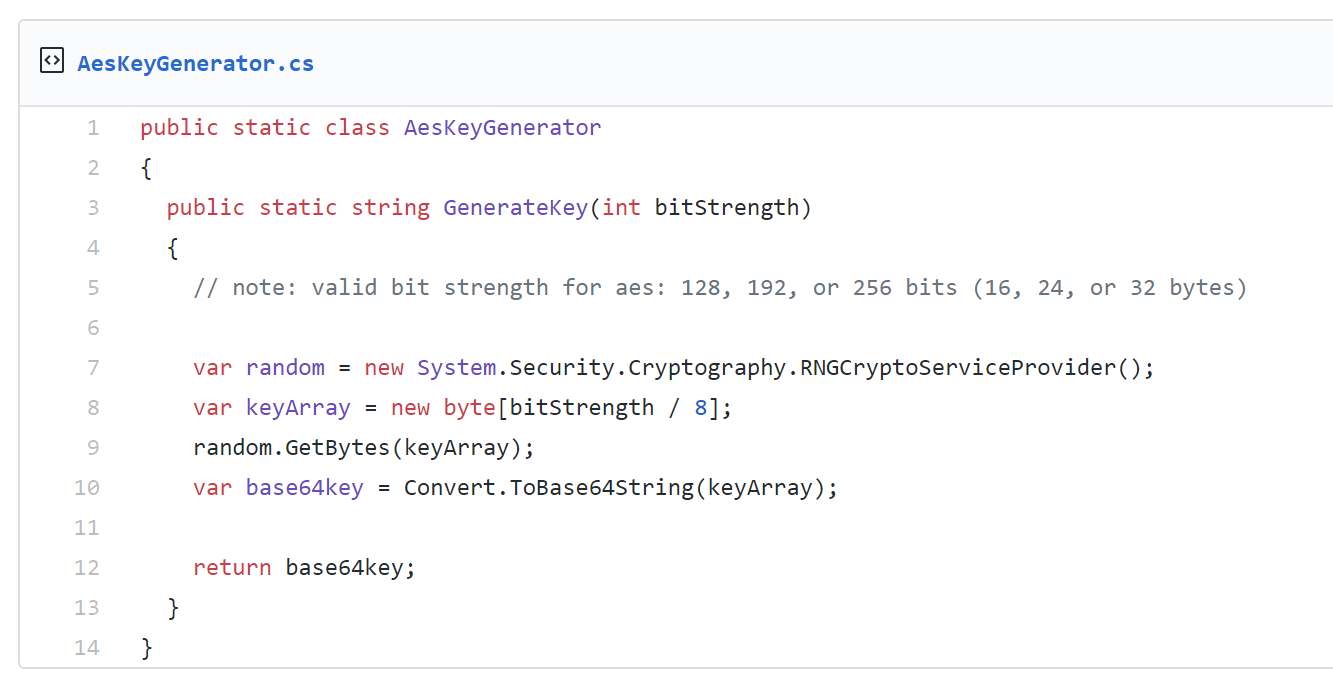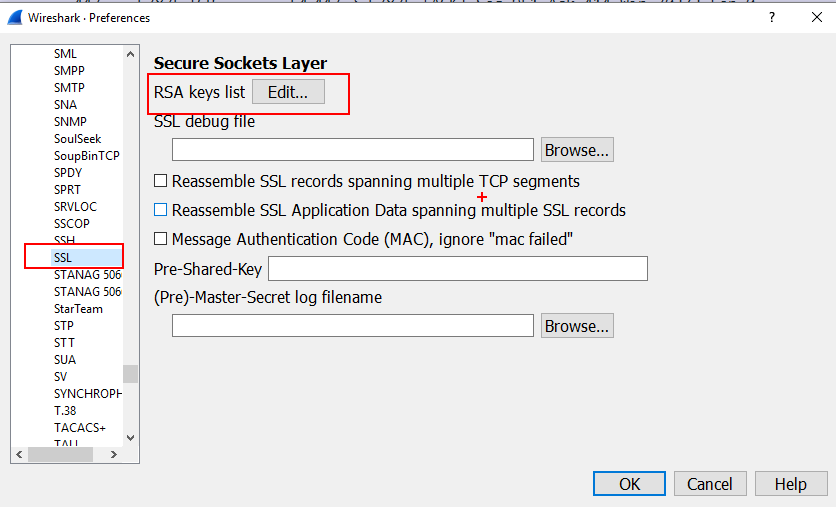Generate Random Aes Key C#
- C# Generate Random Number Between
- Aes Key Fortnite
- Generate Random Aes Key
- C# Generate Random Id
- Generate Aes Key C#
 -->
-->Creating and managing keys is an important part of the cryptographic process. Symmetric algorithms require the creation of a key and an initialization vector (IV). The key must be kept secret from anyone who should not decrypt your data. The IV does not have to be secret, but should be changed for each session. Asymmetric algorithms require the creation of a public key and a private key. The public key can be made public to anyone, while the private key must known only by the party who will decrypt the data encrypted with the public key. This section describes how to generate and manage keys for both symmetric and asymmetric algorithms.
Symmetric Keys
The symmetric encryption classes supplied by the .NET Framework require a key and a new initialization vector (IV) to encrypt and decrypt data. Whenever you create a new instance of one of the managed symmetric cryptographic classes using the parameterless constructor, a new key and IV are automatically created. Anyone that you allow to decrypt your data must possess the same key and IV and use the same algorithm. Generally, a new key and IV should be created for every session, and neither the key nor IV should be stored for use in a later session.
C# Generate Random Number Between
Th length of the bytes are 16 but while converting the bytes to base64 string the length varies for AES Key generated with 128 bit. It becomes greater than 64. The AES Key string length for 128 bit must be. RandomKeygen is a free mobile-friendly tool that offers randomly generated keys and passwords you can use to secure any application, service or device. KEY RandomKeygen - The Secure Password & Keygen Generator. Jun 17, 2013 Encrypt, decrypt and generate a key in C# using AES256. encryption.cs. Encrypt, decrypt and generate a key in C# using AES256. encryption.cs. Skip to content. All gists Back to GitHub. Sign in Sign up Instantly share code, notes, and snippets. Haeky / encryption.cs. Created Jun 17, 2013.
To communicate a symmetric key and IV to a remote party, you would usually encrypt the symmetric key by using asymmetric encryption. Download microsoft office 2010 professional plus key generator free. Sending the key across an insecure network without encrypting it is unsafe, because anyone who intercepts the key and IV can then decrypt your data. For more information about exchanging data by using encryption, see Creating a Cryptographic Scheme.
The following example shows the creation of a new instance of the TripleDESCryptoServiceProvider class that implements the TripleDES algorithm.
When the previous code is executed, a new key and IV are generated and placed in the Key and IV properties, respectively.
Sometimes you might need to generate multiple keys. In this situation, you can create a new instance of a class that implements a symmetric algorithm and then create a new key and IV by calling the GenerateKey and GenerateIV methods. The following code example illustrates how to create new keys and IVs after a new instance of the symmetric cryptographic class has been made.
When the previous code is executed, a key and IV are generated when the new instance of TripleDESCryptoServiceProvider is made. Another key and IV are created when the GenerateKey and GenerateIV methods are called.

Asymmetric Keys
The .NET Framework provides the RSACryptoServiceProvider and DSACryptoServiceProvider classes for asymmetric encryption. These classes create a public/private key pair when you use the parameterless constructor to create a new instance. Asymmetric keys can be either stored for use in multiple sessions or generated for one session only. While the public key can be made generally available, the private key should be closely guarded.
A public/private key pair is generated whenever a new instance of an asymmetric algorithm class is created. After a new instance of the class is created, the key information can be extracted using one of two methods:
The ToXmlString method, which returns an XML representation of the key information.
The ExportParameters method, which returns an RSAParameters structure that holds the key information.
Both methods accept a Boolean value that indicates whether to return only the public key information or to return both the public-key and the private-key information. An RSACryptoServiceProvider class can be initialized to the value of an RSAParameters structure by using the ImportParameters method.
Asymmetric private keys should never be stored verbatim or in plain text on the local computer. If you need to store a private key, you should use a key container. For more on how to store a private key in a key container, see How to: Store Asymmetric Keys in a Key Container.
The following code example creates a new instance of the RSACryptoServiceProvider class, creating a public/private key pair, and saves the public key information to an RSAParameters structure.
See also
-->Definition
Fills an array of bytes with a cryptographically strong random sequence of values.
Overloads
| GetBytes(Byte[]) | When overridden in a derived class, fills an array of bytes with a cryptographically strong random sequence of values. |
| GetBytes(Span<Byte>) | Fills a span with cryptographically strong random bytes. |
| GetBytes(Byte[], Int32, Int32) | Fills the specified byte array with a cryptographically strong random sequence of values. |
When overridden in a derived class, fills an array of bytes with a cryptographically strong random sequence of values.
Parameters
- data
- Byte[]
The array to fill with cryptographically strong random bytes.
Examples
The following example creates a random sequence 100 bytes long and stores it in random.
Remarks
The length of the byte array determines how many random bytes are produced.
See also
- <xref:System.Security.Cryptography.RandomNumberGenerator.Fill(System.Span%3cSystem.Byte%3e)>
Fills a span with cryptographically strong random bytes.
Parameters
Aes Key Fortnite
- data
- Span<Byte>
The span to fill with cryptographically strong random bytes.
See also
- <xref:System.Security.Cryptography.RandomNumberGenerator.Fill(System.Span%3cSystem.Byte%3e)>
Fills the specified byte array with a cryptographically strong random sequence of values.
Parameters
- data
- Byte[]
Generate Random Aes Key
The array to fill with cryptographically strong random bytes.
- offset
- Int32
The index of the array to start the fill operation.
C# Generate Random Id
Exceptions
data is null.
offset or count is less than 0
offset plus count exceeds the length of data.